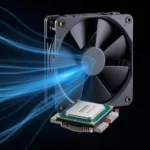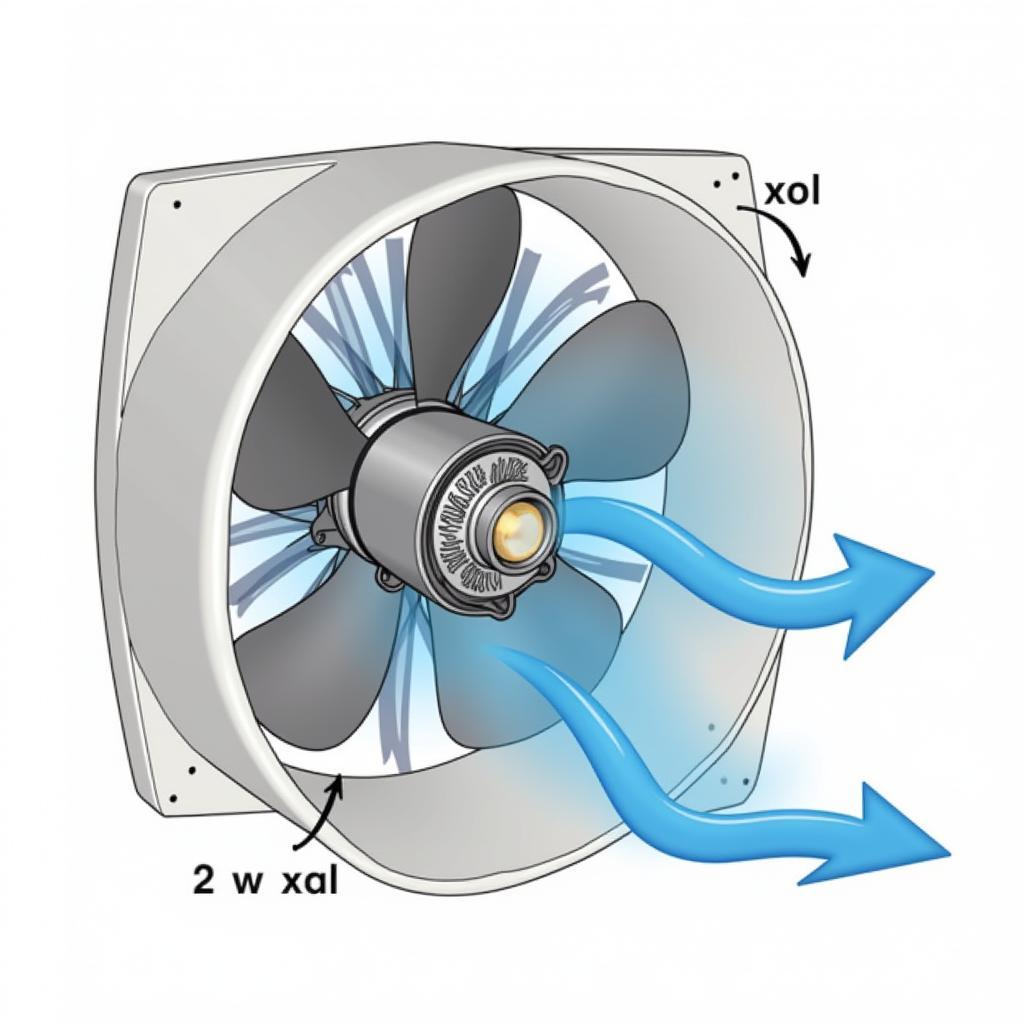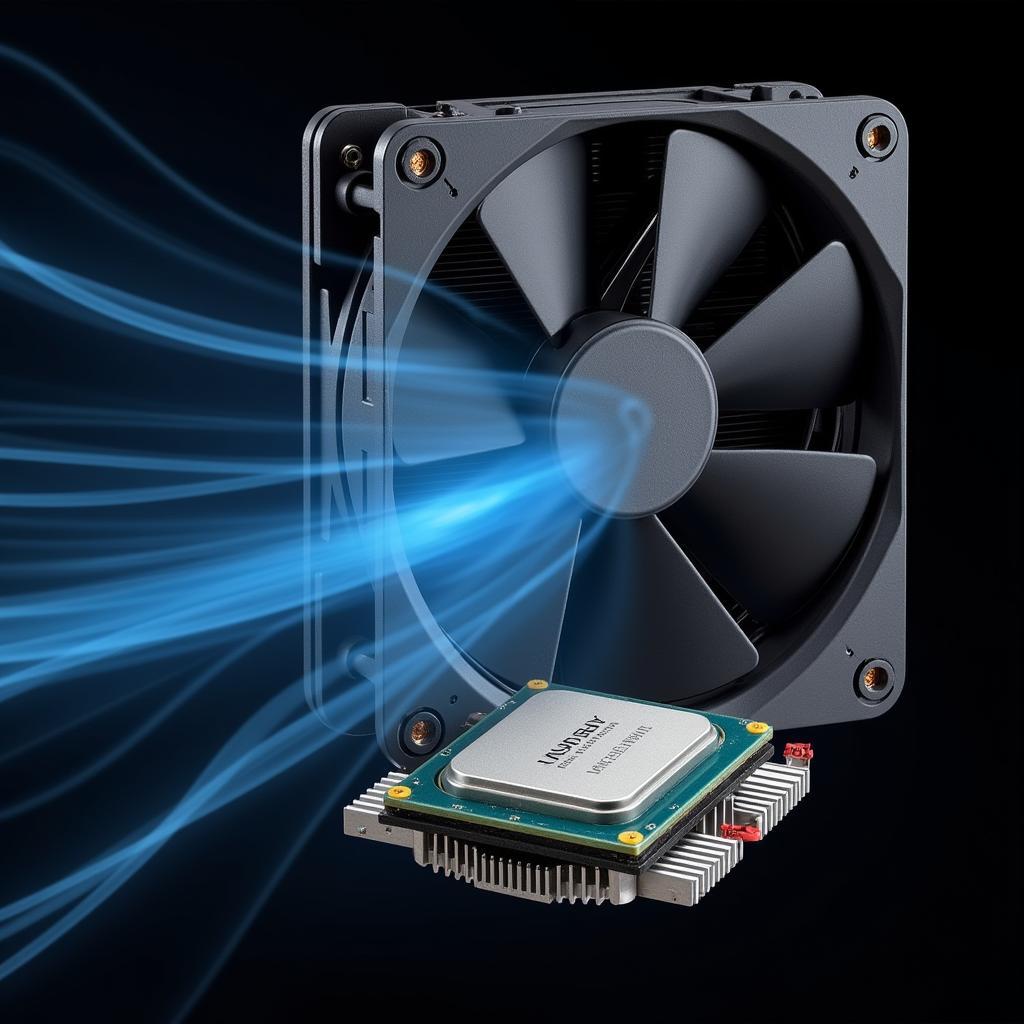The PC fan spinning, but the system not booting is a common problem that can be caused by a variety of factors. This can be frustrating, as it suggests there’s something wrong with your computer, but the system seemingly isn’t giving any clues.
Thankfully, you don’t have to be a computer wiz to solve this problem. By understanding the possible causes and following the troubleshooting steps, you can get your PC back up and running in no time.
Possible Causes of a PC Fan Running But Not Booting
There are several reasons why your PC’s fan may be running, but the system won’t boot. Let’s examine the most common causes:
1. Power Supply Issues
- Insufficient wattage: The power supply unit (PSU) may not be powerful enough to handle the demands of your components, particularly if you’ve upgraded your hardware recently.
- Faulty PSU: The PSU itself could be malfunctioning, delivering insufficient or unstable power to the motherboard.
- Loose connections: Make sure all power cables are securely connected to the motherboard, graphics card, and other components.
- Damaged power cable: A damaged power cable can lead to a lack of power delivery to the motherboard.
2. Motherboard Problems
- Faulty motherboard: The motherboard, which is the heart of your PC, might be defective.
- Corrupted BIOS: The BIOS (Basic Input/Output System), which is a firmware that boots your computer, could be corrupted.
- Short circuit: A short circuit on the motherboard can cause the system to fail to boot.
- Faulty CMOS battery: The CMOS battery is responsible for powering the real-time clock and BIOS settings. A dead battery can prevent your computer from booting.
3. CPU Issues
- Faulty CPU: The CPU itself could be damaged or incompatible with the motherboard.
- Overheating: The CPU might be overheating, preventing it from functioning properly.
- Loose CPU cooler: The CPU cooler might not be properly installed, leading to poor heat dissipation and overheating.
4. RAM Problems
- Faulty RAM: One or more RAM modules could be defective.
- Incompatible RAM: The installed RAM may not be compatible with the motherboard.
- Loose RAM: The RAM modules might not be properly seated in the slots.
5. Graphics Card Issues
- Faulty graphics card: The graphics card could be defective or incompatible with the motherboard.
- Loose connections: Ensure the graphics card is properly seated in its slot and all power cables are securely connected.
6. Storage Drive Issues
- Faulty hard drive: The hard drive or SSD could be damaged.
- Incorrect boot order: The BIOS boot order might be set to boot from the wrong drive.
Troubleshooting Steps for a PC Fan Running But Not Booting
Now that you understand the potential causes, let’s delve into the troubleshooting steps:
1. Check Connections:
- Power supply: Ensure all power cables are securely connected to the PSU and the motherboard, graphics card, and other components.
- Motherboard: Check for any loose or damaged connections on the motherboard.
- RAM: Make sure the RAM modules are firmly seated in their slots.
- Graphics card: Verify that the graphics card is properly installed in its slot and all power cables are securely connected.
- Storage drive: Ensure the storage drive is securely connected to the motherboard.
2. Reseat Components:
- CPU: If you’ve recently upgraded your CPU or cooler, try reseating both.
- RAM: Remove all RAM modules and reseat them one by one, making sure they click into place.
- Graphics card: Remove the graphics card and reinsert it firmly into its slot.
3. Test with Minimal Hardware:
- Remove all peripherals, except for the keyboard and mouse.
- Remove any expansion cards, such as sound cards or network cards.
- Try booting the PC with only essential components: the CPU, motherboard, RAM, power supply, and a single storage drive.
4. Check BIOS Settings:
- Boot order: Verify the boot order in the BIOS is correct.
- CMOS battery: If the CMOS battery is old or dead, replace it.
- XMP profile: If you’re using a high-performance RAM kit, try disabling the XMP profile in the BIOS.
5. Run Diagnostic Tools:
- Power supply tester: Use a power supply tester to check if the PSU is functioning properly.
- Motherboard diagnostic LEDs: Some motherboards have diagnostic LEDs that can help identify potential issues with components.
- Memory test: Run a memory test to check for RAM errors.
6. Seek Professional Help:
If you’ve tried all of these steps and your PC is still not booting, it’s time to seek professional help. A qualified technician can diagnose and repair more complex problems that you may not be able to resolve on your own.
Frequently Asked Questions (FAQs)
Q: My PC’s fan spins for a few seconds then stops. What could be the issue?
A: This is usually a sign of a problem with the power supply. The PSU may not be delivering enough power to start the system or there could be a short circuit.
Q: Can a faulty GPU cause my PC to not boot?
A: Yes, a faulty GPU can prevent your PC from booting. It’s a good idea to try booting without the GPU installed to see if the issue resolves.
Q: How do I know if my motherboard is faulty?
A: A faulty motherboard can cause a variety of symptoms, including the system not booting. If you’ve tried troubleshooting all other components and nothing works, the motherboard may be the issue.
Q: My RAM is compatible with my motherboard, but it’s not working. What could be wrong?
A: Even if your RAM is compatible, it could still be faulty. It’s a good idea to test each RAM module individually to see if you can pinpoint the problem.
Q: My PC is not booting, and I hear a series of beeps. What do they mean?
A: Beeps are a common way for a PC to communicate errors. The specific sequence of beeps can help you identify the problem. Consult your motherboard manual or search online for the beep code meanings.
Q: What should I do if I suspect my hard drive is failing?
A: If you suspect your hard drive is failing, you should immediately back up all your important data. If possible, run a hard drive diagnostic tool to assess the drive’s health.
Q: How do I know if my CMOS battery is dead?
A: A dead CMOS battery can cause the BIOS settings to reset, including the system time and date. If you see incorrect time or date settings, or if your system keeps resetting the BIOS settings, the CMOS battery might be dead.
Q: What are some common signs of a faulty power supply?
A: A faulty power supply can exhibit a variety of symptoms, including the system not booting, frequent shutdowns, and even component damage. If you notice any of these issues, it’s a good idea to check the PSU.
Q: What is the best way to troubleshoot a non-booting PC?
A: The best way to troubleshoot a non-booting PC is to follow a systematic approach. Start by checking the connections and reseating the components. If that doesn’t work, move on to more advanced troubleshooting steps, such as running diagnostic tools or testing with minimal hardware.
Conclusion
A Pc Fan Running But Not Booting can be a frustrating problem, but by understanding the possible causes and following the troubleshooting steps outlined above, you can often resolve the issue yourself. Remember to stay patient, be thorough, and seek professional help if necessary.




